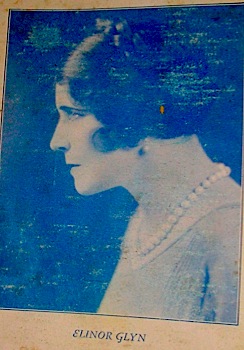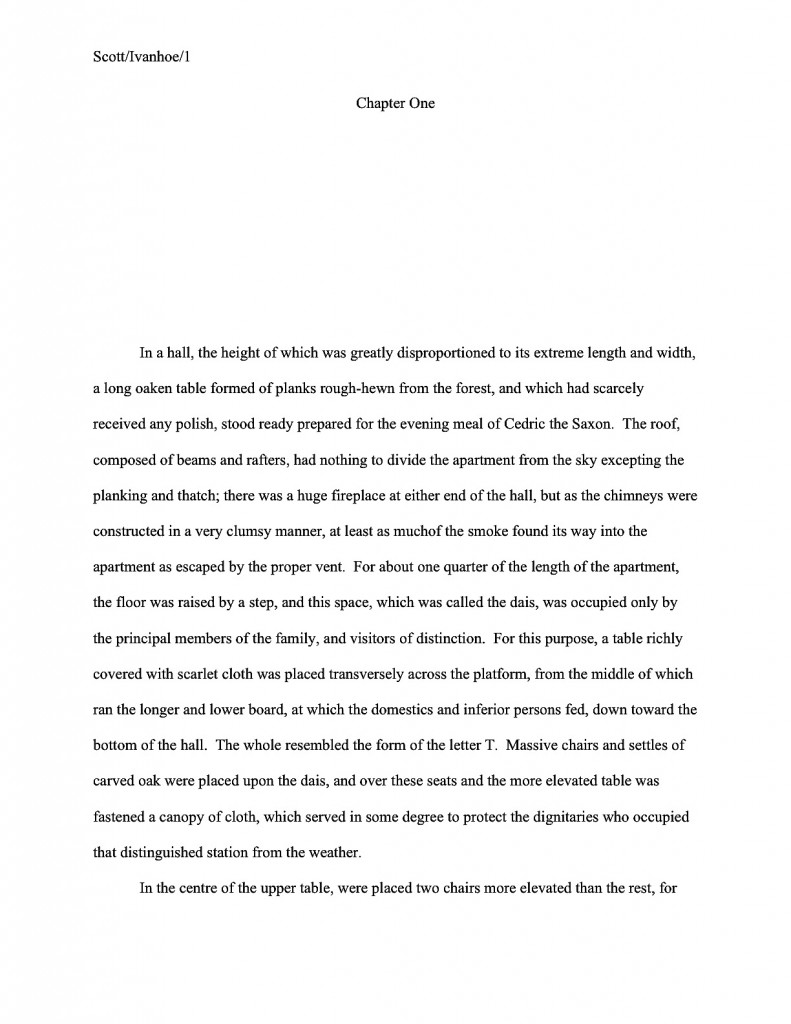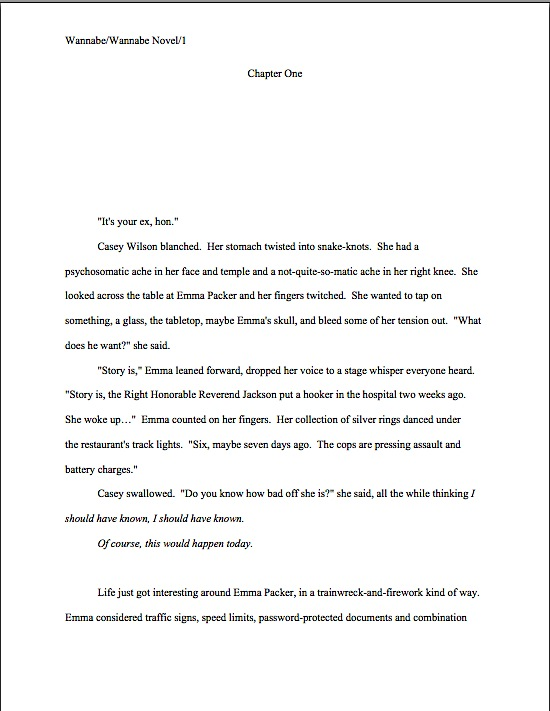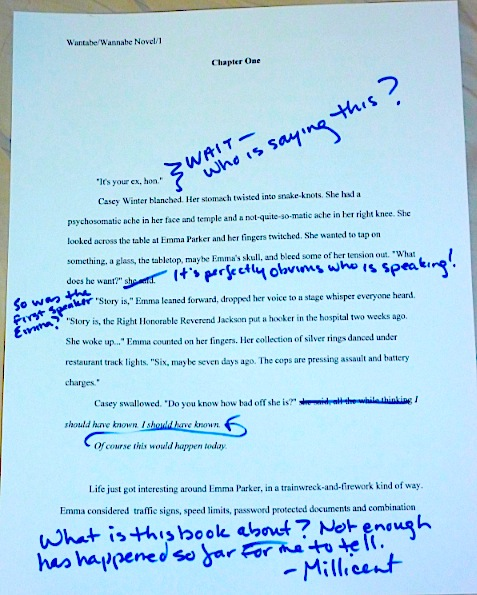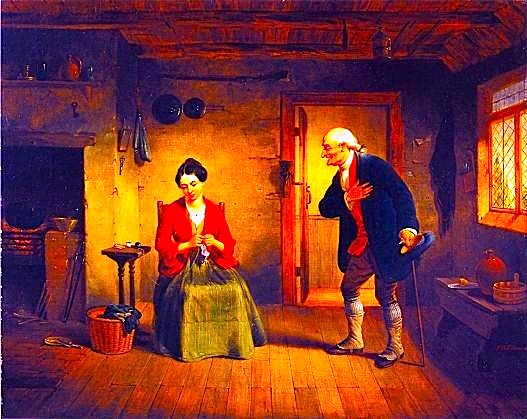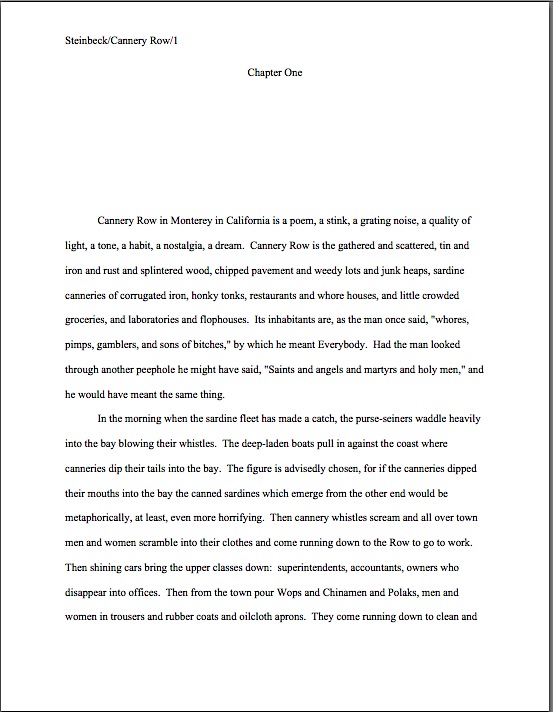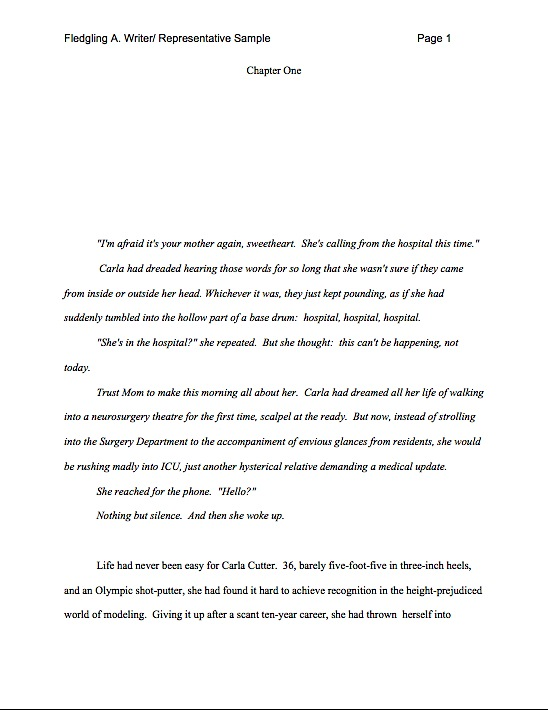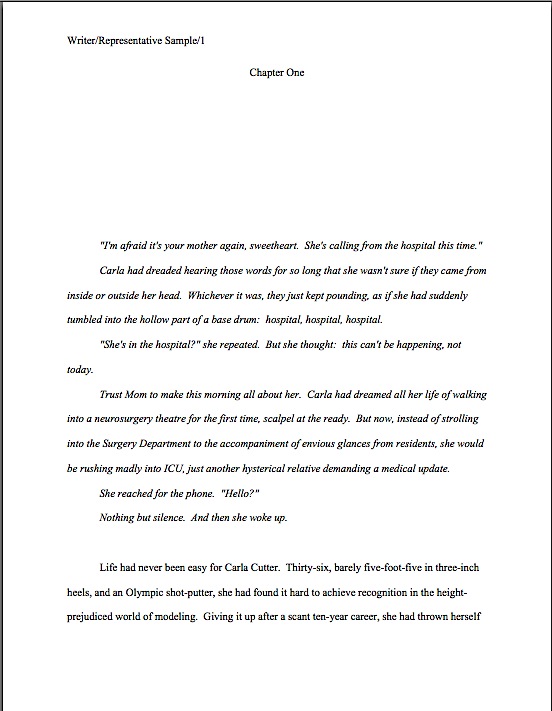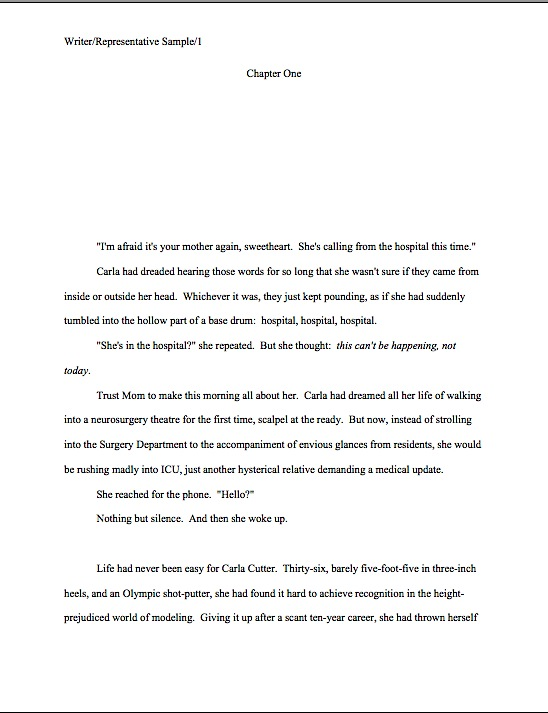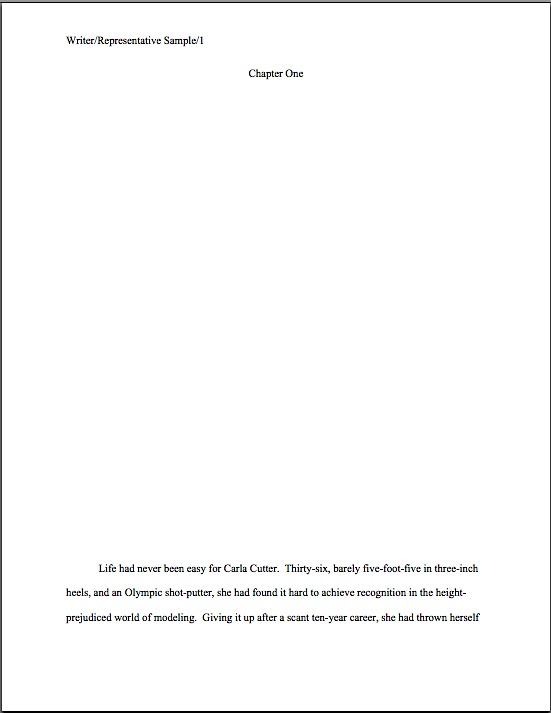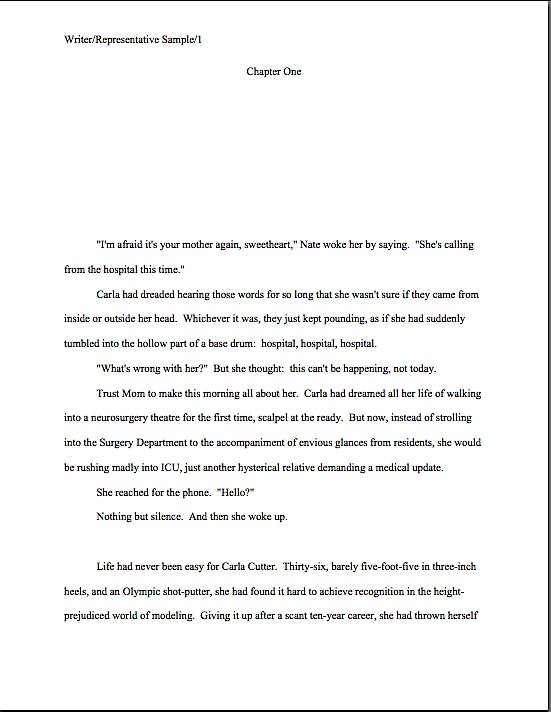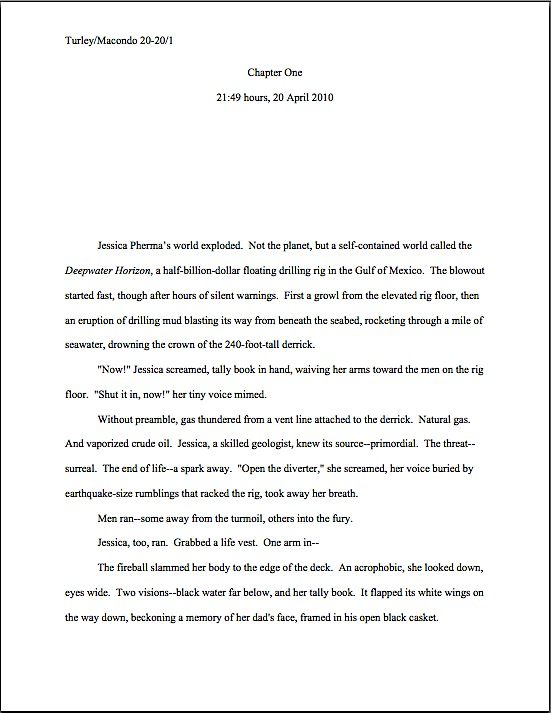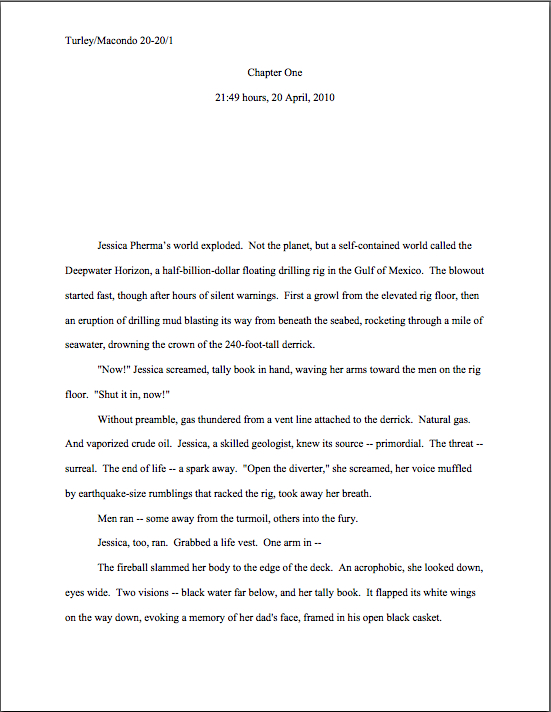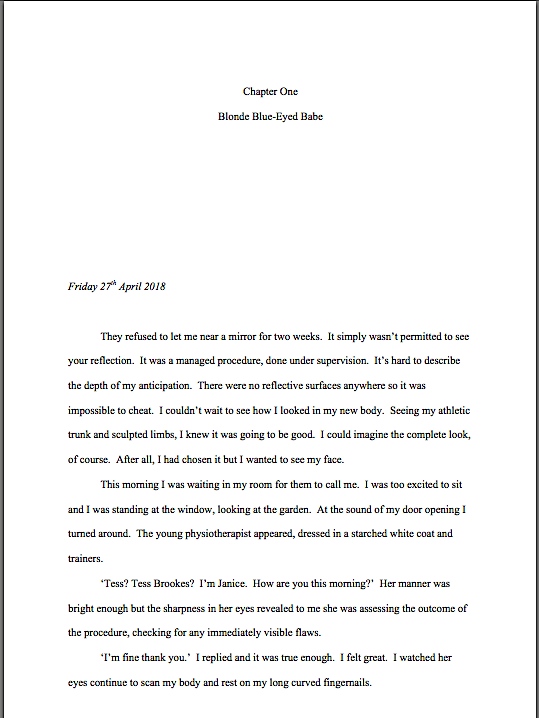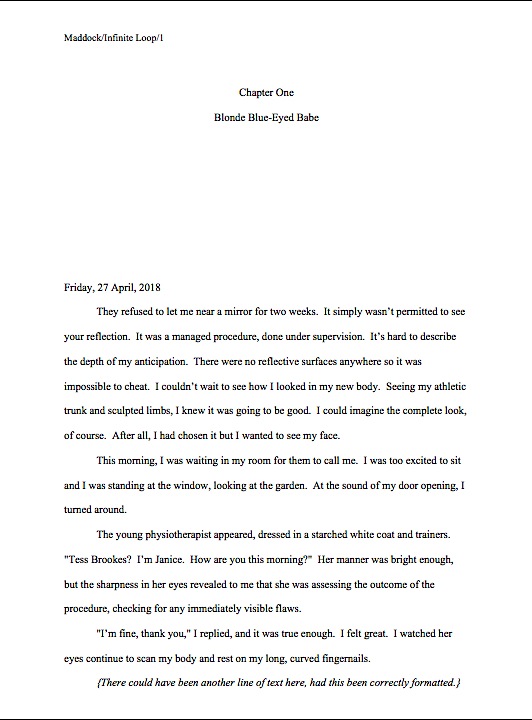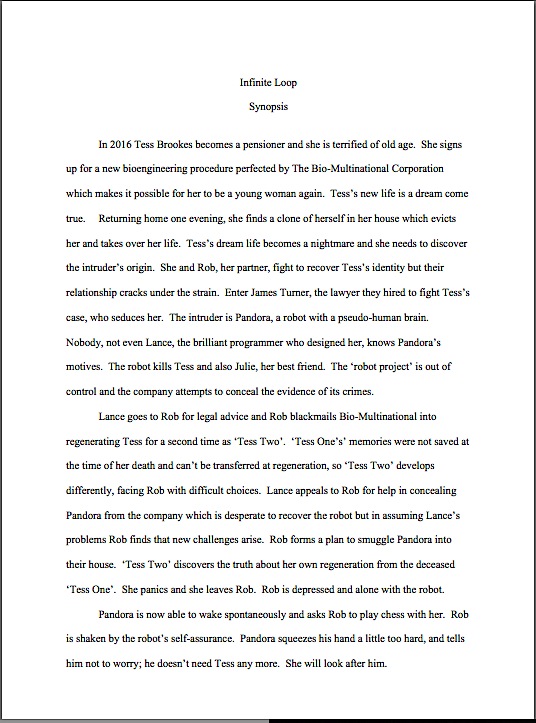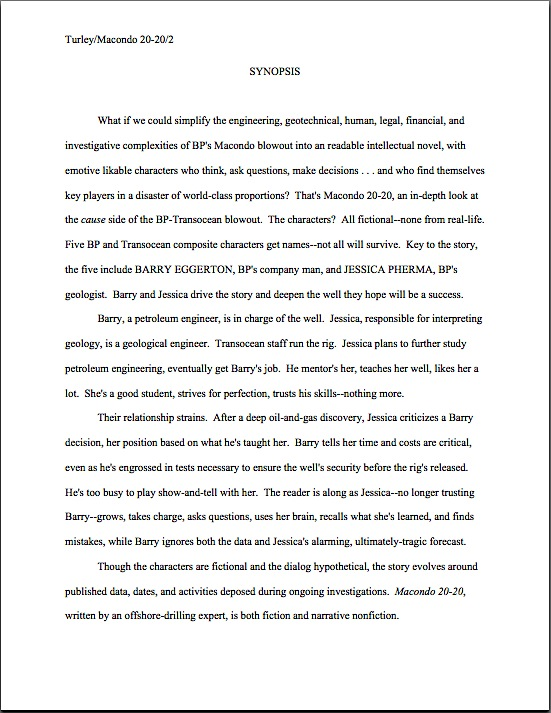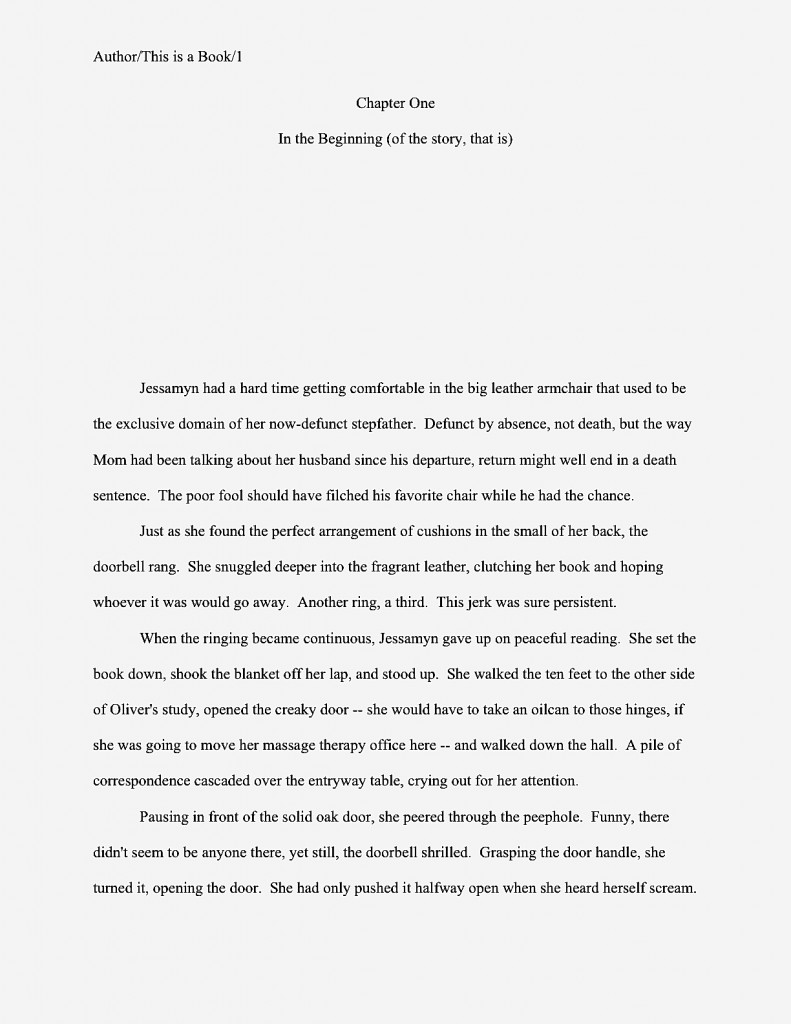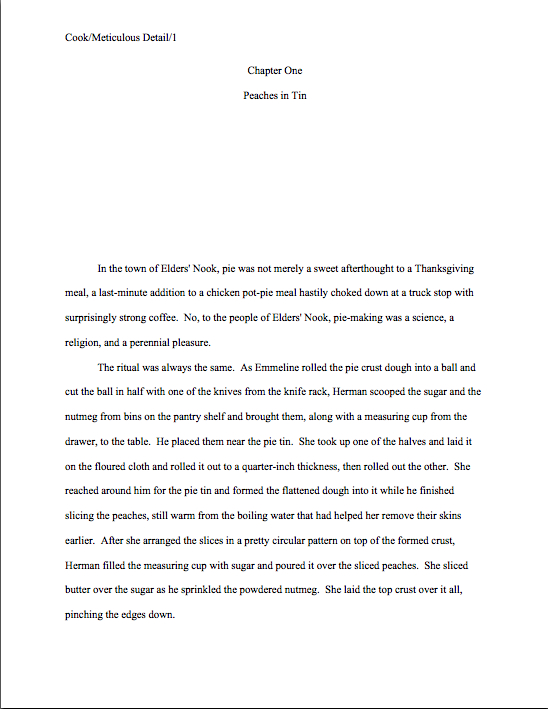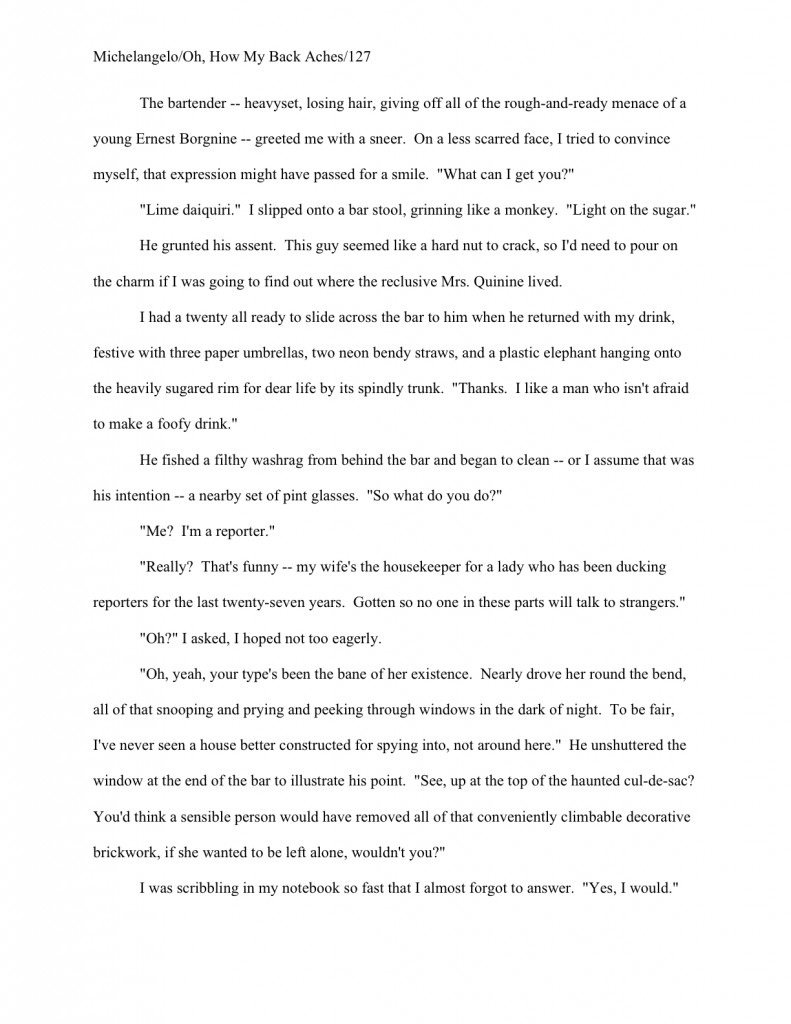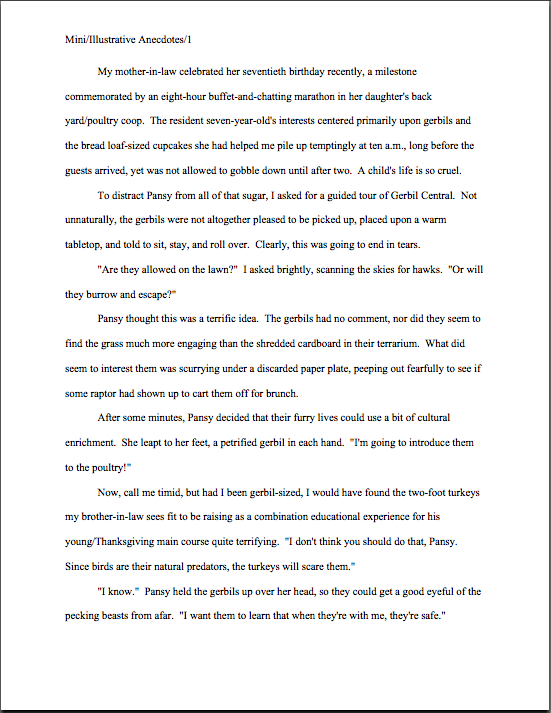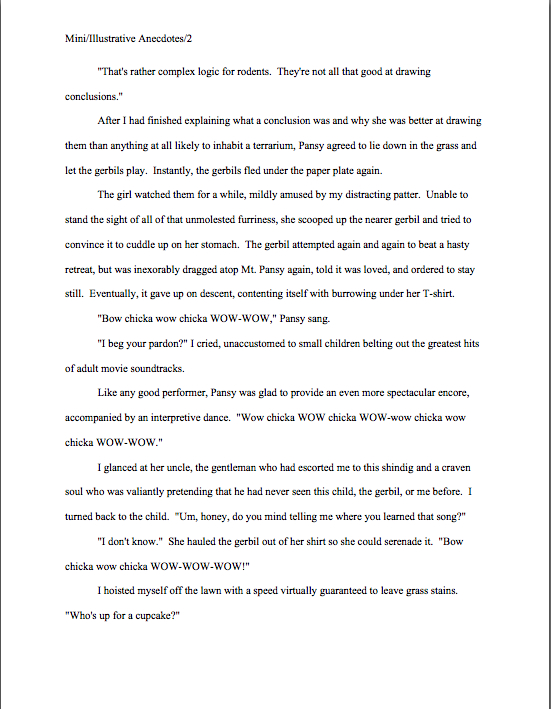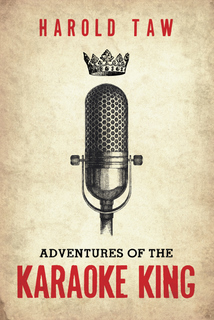Quite the author photo, is it not? That’s the jacket picture for the first edition of Elinor Glyn‘s 1927 bestseller, IT, incidentally — and in response to what those of you familiar with silent film just thought, yes, Madame Glyn was in fact the person who coined the phrase the It Girl for Clara Bow. She also discovered Rudolf Valentino, bullied early Hollywood set dressers out of depicting the stately homes of England with suits of armor in every corner, and convinced the reading public that kissing a lady on the inside of the wrist was far, far sexier than smooching the back of her hand.
She was crucial in establishing many of the long-standing conventions of the romance genre, in short. No great prose stylist, she nevertheless managed to establish her own particular brand of smoldering, setting the standard for passion-on-the-page for decades.
Getting the word out about a writer to that extent was no mean achievement, back in the long-ago days before the Internet — and she pulled it off before telephones were common in private homes. Yet by the time IT was published, Madame Glyn had been THE name in potboiler romance for a decade. Her breakthrough novel, Three Weeks, was considered so scandalous when it came out that it inspired a popular song:
Would you like to sin
With Elinor Glyn
On a tiger skin?
Or would you prefer
To err with her
On some other fur?
Catchy, no? Even today, most authors would have happily cut off a toe or two in exchange for that kind of free publicity.
Why bring up Madame Glyn in the middle of a discussion of narrative shortcuts and too-quick resolutions of major plot conflicts? Ah, I could tell you up front, but if I have learned anything from studying her work, it’s to draw out the mystery.
To our muttons, then, Last time, I broached the monumental twin subjects of tension and conflict in novels and memoirs. While lack of either is a frequent rejection trigger, there are as many individual underlying causes for flabby tension and minimal conflict as there are manuscripts — or, indeed, as there are pages in individual manuscripts. But that’s not going to stop me from talking about how to attack some of the more common culprits.
Yesterday, I introduced the Short Road Home, the all-too-common narrative practice of resolving a conflict practically as soon as it is introduced — or the first time the protagonist really puts his mind to it. Whether it’s stamping out a fallen match before the reader’s had a chance to see it be even the vaguest threat to the drapes or a protagonist so distracted by subplots that she doesn’t get a chance to devote serious thought to the book’s central problem until Chapter 32 in a 33-chapter novel, professional and non-professional readers alike tend to find cutting to the chase dramatically unsatisfying.
Surprisingly, the intention underlying most Short Roads Home is less often a matter of a writer’s trying to pick up a story’s pace than an attempt to skip over a series of events the writer just doesn’t find very interesting. Oh, the provoking event may be interesting, as may the eventual resolution; it’s all of the action needed to get the reader from Point A to Point B that tends to get omitted. SRH solutions may be very attractive to writers not eager to deal with scenes necessary to resolve a conflict and/or the solution’s messy and page-consuming results.
“What’s that, Lassie? Timmy’s fallen into the well?”
It’s so much easier, the logic runs, just to summarize what happened, telling rather than showing the reader what is going on. SRH solutions are, in a word, shortcuts — and in the vast majority of manuscripts, shortcuts that both minimize conflict and reduce tension.
The good news is that the Short Road Home is exceptionally easy to spot in a manuscript, once a writer knows to be looking for it. While a bit time-consuming to fix — often, SRH are small shortcuts, rather than extensive plot detours, so it may require some pretty close reading to spot ‘em — the benefits in added character development tend to be substantial.
Okay, so good news is relative. I never promised you that revision would be a breeze, did I?
Not all too-quick resolutions of a major problem in the plot fall under the SRH rubric, however. Last time, for the sake of discussion, I brewed it for you in its full-bodied version. Today, I am going to deal with the subtle flavor, scenes where character development or conflict is curtailed by too-quick narrative analysis. Like the full-bodied version, this mega-problem is not limited to works of fiction, but runs rampant through narrative nonfiction and memoir as well.
The subtle flavor of the Short Road Home is easy for the author to overlook, particularly in a first novel or memoir. Writers new to the craft tend to be so pleased when they develop the skill to pin down an emotional moment with precision that they go wild with it for a little while. First-person and tight third-person narratives are particularly susceptible to over-analysis: since these point of view choices allow the reader to see the protagonist’s every thought and feeling, it’s pretty easy to get carried away.
The result, alas, is often text in which the conclusions drawn from even the least significant event positively swamp the event itself. In the face of such apparent narrative overreaction, the poor reader is left to guess what is significant and what is merely a passing annoyance.
The border guard eyed him with suspicion. “Your passport, sir?”
Why on earth had the man asked that? Gregory wondered. Was the contraband bulging under his winter coat? Was it too odd that he was wearing a winter coat at all in July?
But what could he do but comply? “Of course. Would you mind holding my monumentally heavy valise while I dig it out?”
The guard accepted the load. “What have you got in here, sir? Gold bars?”
What did the man mean by that? Could he possibly know just by hoisting the bag what was within? Or did the clank give the gold bars away?
As Gregory pulled the necessary papers from his inside coat pocket, a matchbook from the Kit Kat Klub tumbled to the tiled floor. He was too fearful of dropping anything else to pick it up. He lamented the inconvenience. What if he needed to light someone’s cigar on the boat? What if the generator went out, and he was forced to light a candle? Where would he get a candle in that contingency, and did the power go out on steamers very often?
“Here, you are, sir.” The guard returned his passport with a curt smile. “Enjoy your trip.”
Just what did that sinister little smile portend? Gregory wondered uncomfortably. Had he actually gotten away with smuggling, or was the guard merely toying with him?
Exhausting, isn’t it? The instant a solidly conflictual moment peeps its poor little head above ground, narrative eager beavers stop the plot cold to devote themselves to analyzing it, sometimes for pages on end. If a nuance tries to escape unpinned-down, perhaps in order to grace a later scene, the narrative leaps upon it like a vicious wildcat, worrying it to bits.
Frequently, this analysis takes the form of what could be an interestingly subtle conversational conflict’s being presented purely in the form of the protagonist’s mulling over the provocation without responding overtly at all — creating a scene in which all of the conflict takes place in a character’s mind. As we saw above, rhetorical questions are just dandy for achieving this effect.
Oh, what the heck. Let’s see speculation run wild again.
“No more cake for me,” Moira said with a sigh. “I’m stuffed.”
“Oh, have some more, Moira,” Cheyenne wheedled. “You could use to pack on a few pounds.”
Moira’s hand froze in mid-air, crumb-bedusted dessert plate trembling aloft. What did Cheyenne mean by that? Was he just being polite — or was this a backhanded way of reminding her that she was supposed to be on a perpetual diet, with the Miss America pageant only three months away? Or was he afraid that if the guests didn’t consume every last morsel, he would revert to his habits from before, from those torrid days at the emergency reduction boot camp where they’d met, and snort up all of the remaining calories like a Hoover?
She had to smile at the thought: he had been adorable chubby. But that’s not the kind of person who should be seen on a beauty queen’s arm.
She decided to change the subject, as well as her conversational partner. “So, Barbara, how are you enjoying wombat farming?”
See what the narrative has done here? The long internal monologue provides both backstory and character development, but it has also deprived the reader of what could have been a meaningful exchange between Moira and Cheyenne. Instead of allowing the reader to derive impressions of their attitudes toward each other through action and dialogue, the narrative simply summarizes the facts the reader needs to know. To depress the tension of the scene even further, once the logical possibilities for Cheyenne’s motivation have been disposed of in this silent, non-confrontational manner, the scene proceeds as if no conflict had ever reared its ugly head.
Why is this a problem? Well, when a text over-explains situations and motivations, the reader does not have to do any thinking; it’s like a murder mystery where the murderer is identified and we are told how he will be caught on page one. Where’s the suspense? Why keep turning pages?
I see you scowling, but honestly, given how many manuscripts she has to read in a day, this is a completely understandable reaction. Most aspiring writers tend to forget this — or never knew it in the first place — but professional readers do not, as a rule, devour an entire chapter, or even an entire page, before making up their minds about whether they think the submission is marketable. They read line by line, extrapolating patterns.
How might this affect a submission in practice? Let’s assume that Millicent has the first 50 pages of the manuscript containing that last example. If it appears on page 1, she is likely to stop there, because a subtle Short Road Home has already appeared. Because this is her first contact with the writer’s work, she left to speculate whether this is a writing habit, or a one-time fluke. Depending upon which way she decides, she may choose to take a chance that it is a one-time gaffe and keep reading — or, and this is by far the more popular choice, she may pass with thanks.
If the SRH doesn’t appear until page 43, however, she might well continue. She already has some reason to believe that SRHs are not this writer’s go-to solution for conflict. Generally speaking, though, the sooner a writing problem occurs in a manuscript, the more likely she is to diagnose it as inherent to the writer in question’s style, and score the piece accordingly. Even if the overall writing style is strong, a reliance on the SRH is likely to get the writer labeled as promising, but needing a more experience in moving the plot along.
Or, to put it in the parlance of the business, “Next!”
Subtle Short Roads Home often trigger the feedback, “Show — don’t tell!” But frankly, I think that admonition does not give the writer enough guidance. There are a lot of ways that a writer could be telling the reader what is going on; a subtle SRH is only one of many, and I don’t think it’s fair to leave an aspiring writer to guess which rule she has transgressed.
But then, as I believe I have pointed out before, I don’t rule the universe. If I did, though, every writer who was told “Show — don’t tell!” would also receive specific feedback on where and how his manuscript has slipped onto the primrose path of the Short Road Home. In addition, I would provide them with three weeks of paid holiday every six months just for writing (child care provided gratis, of course), a pet monkey, a freezer full of ice cream, and a leather-bound set of the complete writings of Madame de Staël.
Because, frankly, subtle Short Roads Home bug me. I feel that they should be stopped in our lifetime, by federal statute, if necessary.
The way a subtle Short Road Home halts the flow of a wonderful story reminds me of the fate of the migratory birds that used to visit my house when I was a child. Each spring, lovely, swooping swallows would return to their permanent nests, firmly affixed under the eaves of my house, invariably arriving four days after their much-publicized return to Mission San Juan Capistrano, much farther south. For me, it was an annual festival, watching the happy birds frolic over the vineyard, evidently delighted to be home.
Then, one dark year, the nasty little boy who lived half a mile from us took a great big stick and knocked their nests down. The swallows never returned again. Little Georgie had disrupted their narrative, you see.
A subtle SRH disrupts an ongoing narrative, too, smashing imaginative possibilities to the ground with a single blow. Once an overly-enthusiastic analysis has laid the underlying emotional rubric of a relationship completely bare, the rhythm of a story generally has a hard time recovering momentum.
When a text over-analyzes, how can the reader draw any conclusions? That’s not a bad definition of telling, rather than showing, come to think of it: showing the reader what is going on and allowing her to draw her own conclusions tends to produce a richer reading experience than simply stating the facts.
Readers of good writing don’t want to be passive; they want to get emotionally involved with the characters, so they can inhabit, for a time, the world of the book. They want to care about the characters. to keep turning page after page, to find out what happens to them.
Essentially, subtle Short Roads Home are about not trusting the reader to draw the right conclusions about a scene, a character, or a plot twist. They’re about being afraid that the reader might stop liking a character who has ugly thoughts, or who seems not to be handling a situation well. They’re about, I think, a writer’s being afraid that he may not have presented his story well enough to prove the point of his book.
And, sometimes, they’re just about following the lead of television and movies, which show us over and over emotions analyzed to the nth degree. We’ve gotten accustomed to being told immediately why any given character has acted in a particular manner. The various LAW & ORDER franchises excel at this, particularly L&O SVU: in practically every episode, one of the police officers will, in the interests of drama and character development, lose an apparently tenuous grasp on his or her emotions/underlying hostility/grasp of constitutional law and police procedure and let loose upon a suspect.
Or a witness. Or a coworker. The point is, they yell at somebody.
Then, practically the nanosecond after the heat of emotion has passed, another member of the squad will turn up to explain why the character blew up. Helpfully, they often direct this explanation to the person who has just finished bellowing. Whew — just when the audience member thought s/he might have to draw a conclusion based upon what s/he had seen occur.
Or — and this one’s my personal favorite — one of the police officers (or forensic pathologist, or administrator, or someone else entitled by billing to a series of close-ups of an anguished face) does or says something well-intentioned at the beginning of the episode that triggers (however indirectly) someone else to do something stupid. An actual example: “If I hadn’t bought my nephew that computer, he would never have met that online predator!”
Hard to argue with that one, isn’t it? It’s also hard to imagine the next line of dialogue’s not being a cliché, because an assertion like this isn’t precisely conducive to any response but, “Oh, Mrs. Miniver, you mustn’t blame yourself.”
But I digress. With both of these structures, the character in question exhibits his remorse, naturally, by repeating this sentiment at crucial points throughout the episode, looking tortured. Then he bends some pesky police regulation/federal statute/commandment because (and in the interests of brevity, I’m going to cut to the essentials of the argument here) the ends of catching that creep justify the means.
Cue recap of feeling guilty — often punctuated by a co-worker’s patient explanation that capturing the creep du jour didn’t REALLY change the underlying emotional situation, raise the dead, get the nephew un-molested, etc. — and leave those emotional threads hanging for next week’s episode. Wash, rise, repeat.
What identifies this series of events as a Short Road Home is not so much that the villain is pretty much always caught and convicted, but that complex human emotions that talented actors would surely be delighted to play are simply summarized in the plot. Or, to put it as an editor might, the turmoil is told, rather than shown.
To be fair, TV and movie scripts are technically limited to the sensations of sight and sound: they cannot tell their stories any other way. A novelist or memoirist, on the other hand, can draw upon the full range of sensations — and show thoughts. A book writer who restricts himself to using only the tools of TV and movies is like a pianist who insists upon playing only the black keys.
Live a little. You have a lot of ways to show character development and motivation; use them.
Don’t see how this might apply to your revision? Okay, consider your manuscript for a moment: does it contain scenes where, instead of interaction between characters showing the reader what the conflicts are and how the protagonist works through them, the protagonist instead:
(a) sits around (often while driving in a car) and thinks through the problem to its logical conclusion, ruling out possible actions instead of testing them through doing? A species example, so you may recognize it in the wild: Should I go to my boss and confess? No, he’ll never understand. Maybe I should just return the money quietly, hoping no one will notice. But whom am I kidding? Or perhaps I should…
(b) sits around drinking coffee/tea/another beverage with her friends while they come up with analysis and solution? As in: “What do you think, Angela and Trieste? Should I try to save my relationship with Bertie, who might be an axe murderer, or should I leave him? Compare and contrast the possibilities, please, while I score us some more of this luscious chocolate cake.”
Or — and this one often surprises writers when I bring it up:
(c) sits around with her therapist/his significant other, dissecting the problem and coming up with a solution? As in: “Oh, stop kicking yourself, George. You’ve done the best you can for your daughter. It’s not your fault that her mother died in that hideous lacrosse accident when she was only six, and has hated netting ever since.” “I know you’re right, Martha, but by Jove! I can’t help feeling responsible.”
If you can answer yes to any of these questions, sit down right away and read your book straight through, beginning to end. Afterward, ask yourself: would the plot have suffered tremendously if those scenes were omitted entirely? Are there other ways you could convey the same points, through action rather than thought or discussion?
Just a suggestion. (“And just what does she mean by that?” Gregory worried, gnawing his fingernails down to the elbow.)
Speaking of elbows, do I see a few waving in the air? “But Anne,” lovers of the classics protest, “Some of my favorite 19th-century novels spend chapters on end wallowing in the type of intensive introspection you describe. Since good writing is good writing, regardless of the era in which it was produced, Millicent couldn’t possibly regard this orientation as slow pacing.”
Actually, she is fully capable of doing so — in fact, she’s trained to do it. Readers today expect more action on even the literary fiction page than they did back in the days when the next train through town might not show up for a week. That’s why, incidentally, novels (or memoirs) published more than 20 years ago would not be the best role model choices for pacing a book a writer planned to submit today.
Yes, even if the book in question is a recognized classic. I love JANE EYRE as much as the next person, but there’s a reason that all of the film adaptations have simply omitted the huge section of text dealing with the heroine’s conflict over whether to become a missionary or not. As interesting and character-revealing as it is, it’s not as dramatic as the rest of the story.
Do all of those averted eyes mean that some of you don’t want to believe that reading tastes have changed since the Civil War? Believe me, I understand the impulse: it’s tempting, isn’t it, to blame agents for this, since over that particular period they have become the weeders-out of what editors at the major US publishing houses see? (In case you didn’t know, all of the major American publishers currently have policies specifically forbidding considering unagented work; the much-vaunted slush pile no longer exists.) But the fact that pacing standards have sped to near-breakneck rates in recent years really isn’t the agents’ fault: it’s genuinely difficult for them to sell more moderately-paced books. Ditto with long ones.
Why? The price of paper has risen astronomically in recent years, as has the cost of binding. This, in case you are curious, is the primary reason that Millicent tends to have a knee-jerk negative reaction to a first novel much over 100,000 words (400 pages in standard format; if what I just said sounded like Urdu to you, run, don’t walk to check out the HOW TO FORMAT A BOOK MANUSCRIPT and WORD COUNT categories on the archive list at right). At 120,000 words — around 500 pages — the cost of binding shoots up.
Bad news for all of us who grew up wanting to emulate John Irving’s pacing, certainly. Or John Steinbeck’s. Or, if we’re honest about it, the protagonist introspection levels of pretty much any meganovelist who wrote prior to the Second World War.
For reasons of history, then, as well as practicality, Millicent starts to tense up when a submission’s tension begins to wilt. But that doesn’t mean that it’s in a writer’s interest to skim over interesting conflict too quickly with a Short Road Home.
I’ve gleaned a lulu of an example from our cover girl of the day’s best-known novel, IT. The impoverished society-girl heroine, Ava Cleveland, is desperate for money to maintain her lifestyle in the face of her brother’s bordering-on-criminal gambling debts. When the following scene begins, she’s just told her friends that she is spending a season in the country to hide the fact that she is going to be asking her admirer, John Gaunt, to give her a — gasp! — job:
So she shut up the Park Avenue flat and dodged her creditors and disappeared to “Virginia” — which happened on the map to be her old nurse’s abode in an ancient house in the old-fashioned poorer quarter of Brooklyn. Close, if she had known it, to one of John Gaunt’s hospitals for children.
Something made her restless, even from the first day of her arrival — so at last she looked at John Gaunt’s card again — and rang Hanover 09410 — once more.
Admit it: you’re already a trifle bored, aren’t you? That’s probably because you’re so used to the current standards of writing that even this much summary strikes you as skirting the edge of show-don’t-tell comfort. Don’t feel bad, if that was your reaction. Actually, Millicent probably wouldn’t have made it beyond the first sentence of this excerpt — and for a reason that is very common in present-day submissions.
Any idea why? Hint: go back and take a gander at that first sentence.
Quite a few ands in it, aren’t there? And technically, quotation marks should not be used to indicate so-called; italics would have been the preferred choice here.
But let’s be charitable: this was published 1927, when submission standards were a considerably more lax. Moving on:
Miss Shrimper answered and was as insulting as she could be, when she heard a refined female voice…No, Mr. Gaunt could not come to the phone — he never came to the phone! The idea!
Ava’s voice sharpened. “Be good enough to tell him that the lady he met at Mrs. Meriton’s is speaking.”
It is doubtful that even this would have succeeded, had not John Gaunt himself chanced to come out from his inner shrine and seen Miss Shrimper’s acid face — something told him instantly that it was Ava trying to get through to him.
John Gaunt turned to re-enter his private room. “Put her through,” was all he said.
And as she did so, Miss Shrimper’s eyes filled with apprehensive tears.
Did you catch the Short Road Home? The narrative had gotten a legitimate conflict going between Ava and Miss Shrimper (albeit through having chosen to summarize the latter’s indignation rather than showing it through dialogue and tone) — when along comes stupid old John (called by both names each time he appears, please note, a rookie narrative mistake) to intuit what’s going on by some mysterious, doubtless magical means.
Presto! Conflict killed.
Not content with abruptly cutting off the hostility between the two women, Glyn went on to minimize Ava’s difficulties in asking for what she wants — another perennially popular version of the Short Road Home. To top it off, her characters take refuge in that most boring of dialogue forms, the ultra-polite. See for yourself.
“Good morning, Miss Cleveland.” His voice was deep, and Ava, at the other end, quivered strangely. “What can I do for you?”
“I want to — work.”
“You had better come and see me tomorrow at eleven, then — I am altering some posts in my office. You may wish to give the name of Miss Clover, perhaps?” The tones were cold as steel and entirely businesslike.
Ava experienced a chill — but “Miss Clover!” That was an idea! “Very well, she answered, and put down the phone.
John Gaunt lay back in his chair and smiled.
“How surprised she will be,” he said to himself. Then he went out and had his rather long hair trimmed slightly so that its thick, deep waves lay close against his Napoleonic head. His nails, which Ava had thought too brilliantly polished, were given a still brighter luster too. Then he went to his Club and was sphinx-like and almost surly with one or two business friends he met.
I could have stopped earlier, but who was I to deny you that Napoleonic head? Hard to imagine that less than a century ago, that description would have been considered inherently attractive, isn’t it?
I could run through a laundry list of all the reasons Millicent might give for not making it all the way through this excerpt — the repeated two-part name, the telling rather than showing, the paragraph containing only a single sentence, the mysterious capitalization of club, the burning question of how exactly may one be sphinx-like without either posing riddles or having a cat’s head — but that’s not what I want you to focus upon here. Instead, concentrate on just how effectively the use of the Short Road Home in this last bit smothered all of the following:
(a) the tension that the narrative seems to be assuring the reader exists, yet doesn’t actually show;
(b) the sense that Ava was having to overcome any scruples in going to work, since she just blurted out the request with no preamble or hesitation, beyond the moment indicated by the dash;
(c) any indication that Ava was going to have to beg for the job, since John Gaunt agrees instantly, and
(d) any anticipation the reader might have felt prior to this scene about difficulties Ava might encounter at her first job, since John Gaunt has very kindly handed her a simple alternative to having to be honest about who she is — and in case we were in any doubt about this suggestion’s utility, Ava considerately just tells the reader that it’s a good idea.
A pretty efficient page’s work — and that’s not even counting the significant achievement of impressing the reader with Ava’s apparent inability to hold still for more than a paragraph without quivering for reasons she doesn’t understand. (Nor do we, as it happens.) By handling potentially conflict-ridden material in this manner, Madame Glyn effectively killed the tension of what should have been a harrowing scene.
That’s unfortunate, because this super-quick resolution is not even representative of the rest of the book. Oh, Madame Glyn does favor the Short Road Home from time to time — but given the exchange above, would you be expecting Ava to try to sell herself to John in order to save her brother? Or John to use the solicitation of same as a complex ruse to propose marriage? Or for businesslike John to express his burgeoning feelings to Ava through (I kid you not) the delicate art of interior decoration?
The moral: just because a storyline is full of conflict doesn’t necessarily mean that the book will be a page-turner. How a writer chooses to present that conflict is crucial.
Frankly, Millicent would be a less cynical woman if more aspiring writers realized this. Beware of inexplicable quavering, everybody, and keep up the good work!
